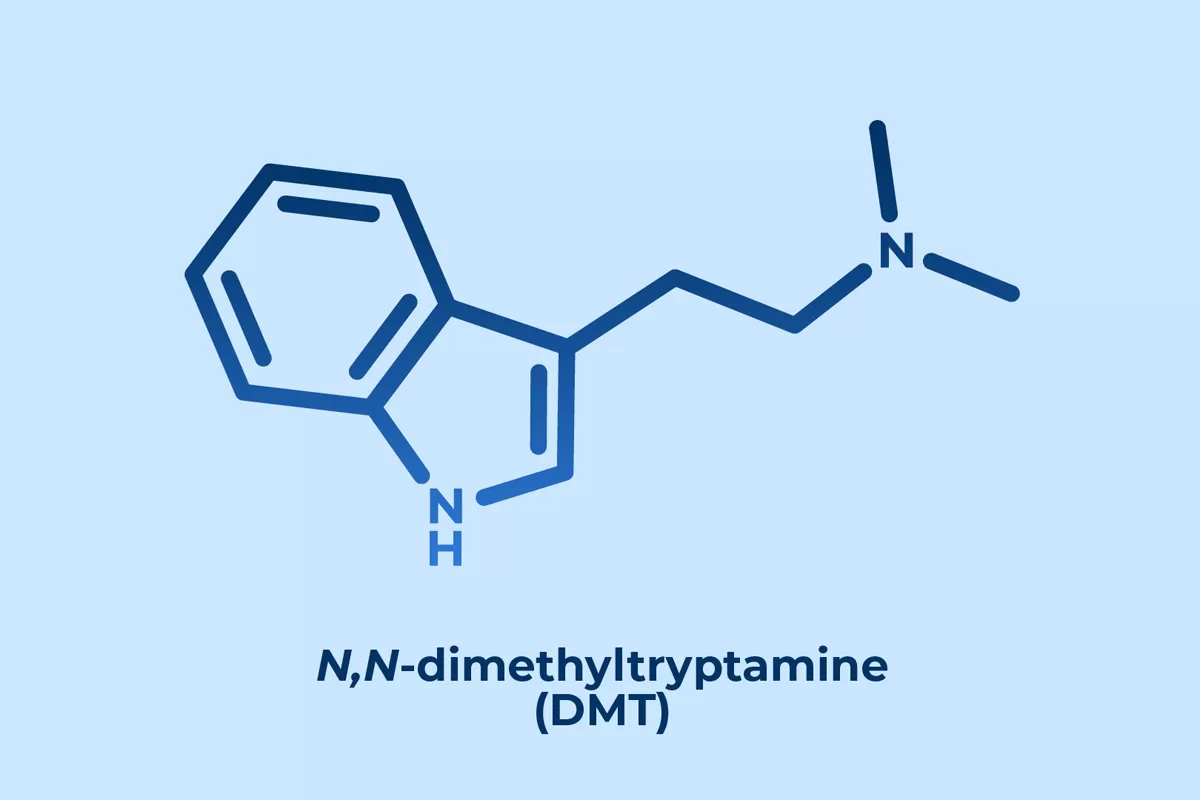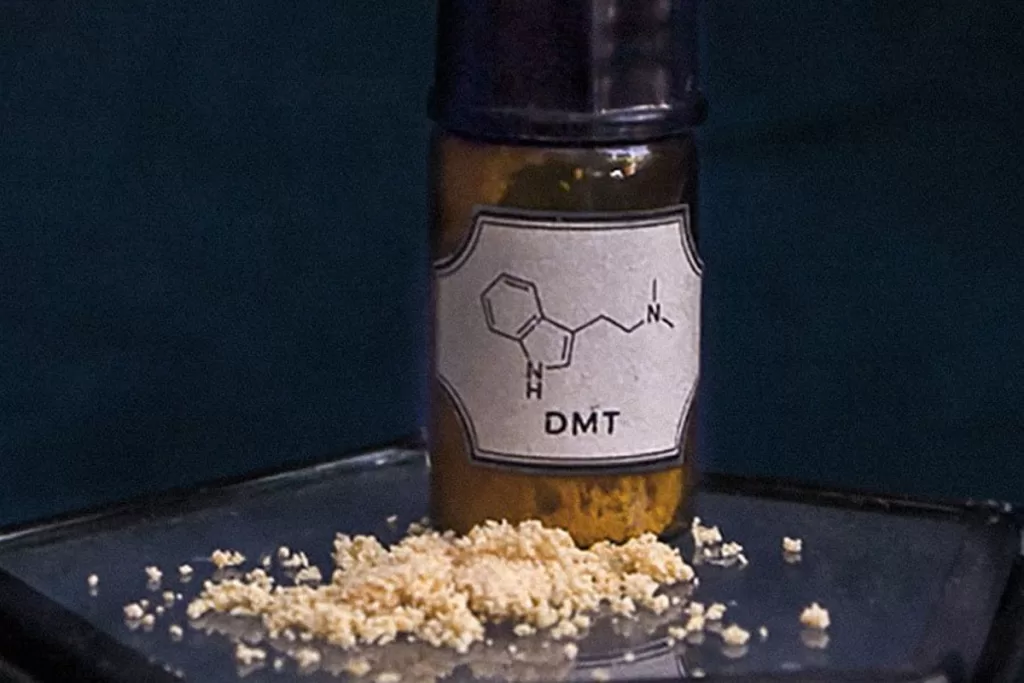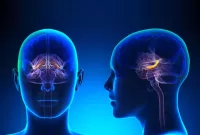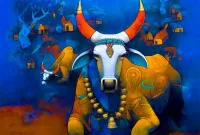DMT, or N,N-dimethyltryptamine, is a powerful psychedelic substance that has been used for centuries in traditional South American shamanic rituals. This powerful psychoactive compound is known for its ability to induce intense and vivid hallucinations, changes in perception of time and space, and a sense of euphoria or transcendence. Despite its long history of use, DMT is currently a Schedule I controlled substance in the United States, which means it is illegal to manufacture, possess, or distribute.
DMT is typically consumed by smoking, vaporizing, or drinking it as a brew called ayahuasca. The effects of DMT are short-lived, typically lasting only 30 to 45 minutes. While DMT is considered to be non-toxic, it can still cause anxiety, paranoia, and confusion in some individuals. Despite the illegal status, some people continue to use DMT for spiritual or therapeutic reasons.
This comprehensive guide is designed to explore the world of DMT, delving into its history, effects, therapeutic potential, legal status, and more. We’ll take a closer look at how DMT is consumed, how it affects the brain and mind, and the risks and benefits associated with its use. We’ll also discuss the future of DMT research, as well as its place in the wider psychedelic landscape. Whether you’re a curious individual or a healthcare professional, this guide aims to provide you with a deeper understanding of DMT and the ongoing debates surrounding its use.
What is DMT and How is it Consumed?
DMT, or N,N-dimethyltryptamine, is a naturally occurring psychedelic substance that is structurally similar to serotonin, a neurotransmitter found in the brain. DMT is a powerful psychoactive compound that has been used for centuries in traditional South American shamanic rituals.
DMT can be consumed in different ways, including smoking, vaporizing, or drinking it as a brew called ayahuasca. When smoked, DMT produces intense and vivid hallucinations, changes in perception of time and space, and a sense of euphoria or transcendence within seconds. The effects of DMT last for 30 to 45 minutes when consumed through smoking.
Ayahuasca, also known as “yagé,” is a traditional brew that is made by boiling the leaves of the Psychotria viridis shrub, which contain DMT, along with the stems of the Banisteriopsis caapi vine, which contain MAO inhibitors. These inhibitors prevent the natural breakdown of DMT in the body, allowing it to be absorbed and produce psychedelic effects. The effects of ayahuasca typically last for 4 to 6 hours.
When vaporized, DMT effects are similar to those of smoked DMT, but the onset of the effects is slower and the duration is longer. The effects of DMT when vaporized, typically last for about 1 hour.
It’s important to note that DMT is a Schedule I controlled substance in the United States, which means it is illegal to manufacture, possess, or distribute. Therefore, it is important to consult with a healthcare professional and to be aware of the legal consequences before considering using it.
- also read : CAN I LIVE WITHOUT TECHNOLOGY?
The Effects of DMT on the Brain and Mind
DMT, or N,N-dimethyltryptamine, is a powerful psychedelic substance that can have profound effects on the brain and mind. When consumed, DMT produces intense and vivid hallucinations, changes in perception of time and space, and a sense of euphoria or transcendence.
DMT’s effects on the brain are still not fully understood, but research suggests that it interacts with serotonin receptors, specifically the 5-HT2A receptor. This interaction is thought to lead to the hallucinations and changes in perception that are characteristic of a DMT experience.
DMT can also affect the way the brain processes information, leading to changes in how the individual perceives and interprets the world around them. People who have used DMT report experiencing vivid colors, geometric patterns, and other visual distortions. They also describe feeling as if they have entered an alternate reality or dimension, and that they have been transported to a different place or time.
DMT can also have profound effects on the emotional and spiritual state of an individual. Some people report feeling a sense of euphoria or transcendence, as if they have connected with a higher power or have been given a glimpse into the true nature of reality. Others may have a “bad trip” and experience feelings of anxiety, paranoia, and confusion.
It’s important to note that DMT can be psychologically intense, and it is recommended that individuals who are considering using it, should have a sitter or guide present during the experience to provide support and ensure safety.
It is also important to note that DMT is a Schedule I controlled substance in the United States, and its use is illegal. Therefore, it is important to consult with a healthcare professional and to be aware of the legal consequences before considering using it.
The Therapeutic Potential of DMT
DMT, or N,N-dimethyltryptamine, is a powerful psychedelic substance that has been used for centuries in traditional South American shamanic rituals. Despite its current Schedule I controlled substance status in the United States, some people continue to use DMT for spiritual or therapeutic reasons.
Recent studies have suggested that DMT may have therapeutic potential in treating certain conditions such as PTSD, addiction, and depression. However, more research is needed to fully understand the therapeutic potential of DMT and to determine safe and effective dosing guidelines.
One of the therapeutic potential of DMT is in the treatment of PTSD. A study conducted in 2019, found that a single dose of DMT led to a significant reduction in symptoms of PTSD. Participants in the study reported feeling less anxious and more at peace, and some even reported feeling as if they had been “cured” of their PTSD.
Another potential therapeutic use of DMT is in the treatment of addiction. DMT has been found to help individuals overcome addiction by providing a sense of transcendence, which can help individuals to detach from their addiction and gain a new perspective on their situation.
DMT has also been found to be effective in treating depression, a study conducted in 2020 found that a single dose of DMT led to a significant reduction in symptoms of depression.
It’s important to note that DMT is a Schedule I controlled substance in the United States, and its use is illegal. Therefore, it is important to consult with a healthcare professional and to be aware of the legal consequences before considering using it. Also, more research is needed to fully understand the therapeutic potential of DMT and to determine safe and effective dosing guidelines.
DMT and Mental Health
DMT, or N,N-dimethyltryptamine, is a powerful psychedelic substance that can have profound effects on the brain and mind. While DMT is considered to be non-toxic, it can still cause anxiety, paranoia, and confusion in some individuals, particularly in those with pre-existing mental health conditions.
It is important to note that individuals with a history of mental health conditions such as schizophrenia, bipolar disorder or PTSD should exercise caution when considering using DMT, as it may worsen their symptoms. It is also not recommended for those currently experiencing symptoms of depression or anxiety.
DMT can also trigger latent mental health conditions and can lead to a “bad trip” which can cause severe anxiety, paranoia, and confusion. For this reason, it is recommended that individuals who are considering using DMT, should have a sitter or guide present during the experience to provide support and ensure safety.
It is important to note that DMT is a Schedule I controlled substance in the United States, and its use is illegal. Therefore, it is important to consult with a healthcare professional and to be aware of the legal consequences before considering using it. It is also important to be aware of any pre-existing mental health conditions and to consult a healthcare professional before using DMT.
DMT’s Legal Status
DMT, or N,N-dimethyltryptamine, is a powerful psychedelic substance that has been used for centuries in traditional South American shamanic rituals. However, its use is currently illegal in most countries, including the United States, where it is classified as a Schedule I controlled substance.
Being a Schedule I controlled substance means that DMT is considered to have a high potential for abuse and no currently accepted medical use. This classification puts DMT in the same category as other drugs such as heroin and cocaine. Possession, manufacture, and distribution of DMT are all federal crimes, and individuals found guilty of these crimes can face severe penalties, including fines and prison time.
There is ongoing debate around whether DMT should be decriminalized or legalized for therapeutic or spiritual use. Proponents of decriminalization argue that DMT has therapeutic potential and that individuals should be able to use it for spiritual or personal growth. Opponents argue that the risks associated with DMT use outweigh any potential benefits, and that it should remain illegal.
It is important to note that DMT’s legal status may vary in different countries and regions, and it is essential to be aware of the laws and regulations in your specific area before considering using DMT. It is also important to consult with a healthcare professional and to be aware of the legal consequences before considering using it.
DMT and Spirituality
DMT, or N,N-dimethyltryptamine, is a powerful psychedelic substance that has been used for centuries in traditional South American shamanic rituals. DMT is known for its ability to induce intense and vivid hallucinations, changes in perception of time and space, and a sense of euphoria or transcendence. This combination of effects has led many people to use DMT as a tool for spiritual or personal growth.
In traditional South American cultures, DMT has been used as part of shamanic rituals to connect with the spirit world and to gain insight and guidance. The intense and vivid hallucinations produced by DMT are thought to allow individuals to access other dimensions or realms and to communicate with spirit guides or other entities.
Some people also use DMT as a tool for personal growth, seeing it as a way to connect with a higher power or to gain a deeper understanding of the true nature of reality. The sense of euphoria or transcendence that can be produced by DMT is thought to help individuals detach from the material world and to gain a new perspective on their lives.
It is important to note that DMT’s spiritual use is subjective and personal, and it is essential to approach it with caution and respect. It is also important to be aware of the legal status of DMT in your specific area before considering using it for spiritual or personal growth. It is also important to consult with a healthcare professional and to be aware of the legal consequences before considering using it.
The Future of DMT Research
DMT, or N,N-dimethyltryptamine, is a powerful psychedelic substance that has been used for centuries in traditional South American shamanic rituals. Despite its current Schedule I controlled substance status in the United States, recent studies have suggested that DMT may have therapeutic potential in treating certain conditions such as PTSD, addiction, and depression. However, more research is needed to fully understand the therapeutic potential of DMT and to determine safe and effective dosing guidelines.
Currently, there are ongoing research studies that are exploring the use of DMT in the treatment of various conditions such as PTSD, depression, and addiction. These studies are aimed at understanding the specific mechanisms of DMT’s effects on the brain and its potential therapeutic applications.
The future of DMT research is also looking at the combination of DMT with other substances, such as psilocybin and ketamine, in order to enhance its therapeutic potential. This approach is known as “stacking” and it is based on the idea that by combining different substances, their therapeutic potential can be increased.
Despite the ongoing research, it is important to note that DMT is a Schedule I controlled substance in the United States, and its use is illegal. Therefore, it is important to consult with a healthcare professional and to be aware of the legal consequences before considering using it. It is also important to be aware that the use of DMT is not recommended for self-medication and that more research is needed to fully understand its therapeutic potential and to determine safe and effective dosing guidelines.
The DMT Experience
DMT, or N,N-dimethyltryptamine, is a powerful psychedelic substance that can produce intense and vivid hallucinations, changes in perception of time and space, and a sense of euphoria or transcendence. The DMT experience can be different for each individual, and it depends on various factors such as dosage, setting, mindset, and previous experiences.
A typical DMT experience is characterized by intense and vivid hallucinations, including geometric patterns and other visual distortions, as well as changes in perception of time and space. The individual may feel as if they have entered an alternate reality or dimension, and that they have been transported to a different place or time. The experience can be overwhelming, and the person may feel a sense of euphoria or transcendence, as if they have connected with a higher power or have been given a glimpse into the true nature of reality.
However, it’s also possible to have a “bad trip” during a DMT experience, which is characterized by feelings of anxiety, paranoia, and confusion. This is why it’s important to have a sitter or guide present during the experience to provide support and ensure safety.
To prepare for a DMT experience, it is recommended to set a comfortable and safe environment, to have a clear intention and to be in a stable mindset. It’s also recommended to approach the experience with an open and
DMT and the Wider Psychedelic Landscape
DMT, or N,N-dimethyltryptamine, is a powerful psychedelic substance that has been used for centuries in traditional South American shamanic rituals. DMT is a part of the wider psychedelic landscape, which includes other substances such as psilocybin, LSD, and ayahuasca.
Psilocybin, also known as “magic mushrooms,” is another naturally occurring psychedelic substance that is structurally similar to DMT. Psilocybin is known for its ability to produce intense and vivid hallucinations, changes in perception of time and space, and a sense of euphoria or transcendence. Psilocybin has also been found to have therapeutic potential in treating certain conditions such as PTSD, addiction, and depression.
LSD, or Lysergic acid diethylamide, is a synthetic psychedelic substance that is known for its ability to produce intense and vivid hallucinations, changes in perception of time and space, and a sense of euphoria or transcendence. LSD has also been found to have therapeutic potential in treating certain conditions such as PTSD, addiction, and depression.
Ayahuasca, is a traditional brew that is made by boiling the leaves of the Psychotria viridis shrub, which contain DMT, along with the stems of the Banisteriopsis caapi vine, which contain MAO inhibitors. Ayahuasca is known for its ability to produce intense and vivid hallucinations, changes in perception of time and space, and a sense of euphoria or transcendence. Ayahuasca has also been found to have therapeutic potential in treating certain conditions such as PTSD, addiction, and depression.
It is important to note that DMT, Psilocybin, LSD, and Ayahuasca are Schedule I controlled substances in the United States, and their use is illegal. Therefore, it is important to consult with a healthcare professional and to be aware of the legal consequences before considering using them.
DMT, or N,N-dimethyltryptamine, is a powerful psychedelic substance that has been used for centuries in traditional South American shamanic rituals. DMT is known for its ability to produce intense and vivid hallucinations, changes in perception of time and space, and a sense of euphoria or transcendence.
Recent studies have suggested that DMT may have therapeutic potential in treating certain conditions such as PTSD, addiction, and depression. However, more research is needed to fully understand the therapeutic potential of DMT and to determine safe and effective dosing guidelines.
DMT is a Schedule I controlled substance in the United States, which means it is illegal to manufacture, possess, or distribute. Therefore, it is important to consult with a healthcare professional and to be aware of the legal consequences before considering using it.
DMT is a part of the wider psychedelic landscape, which includes other substances such as psilocybin, LSD, and ayahuasca. These substances also have therapeutic potentials, but it is important to note that they too are Schedule I controlled substances in the United States, and their use is illegal.
It is important to approach the use of DMT and other psychedelics with caution and respect, and to be aware of the legal status, potential risks, and benefits before considering using them. It is also important to consult with a healthcare professional and to have a sitter or guide present during the experience to provide support and ensure safety.





